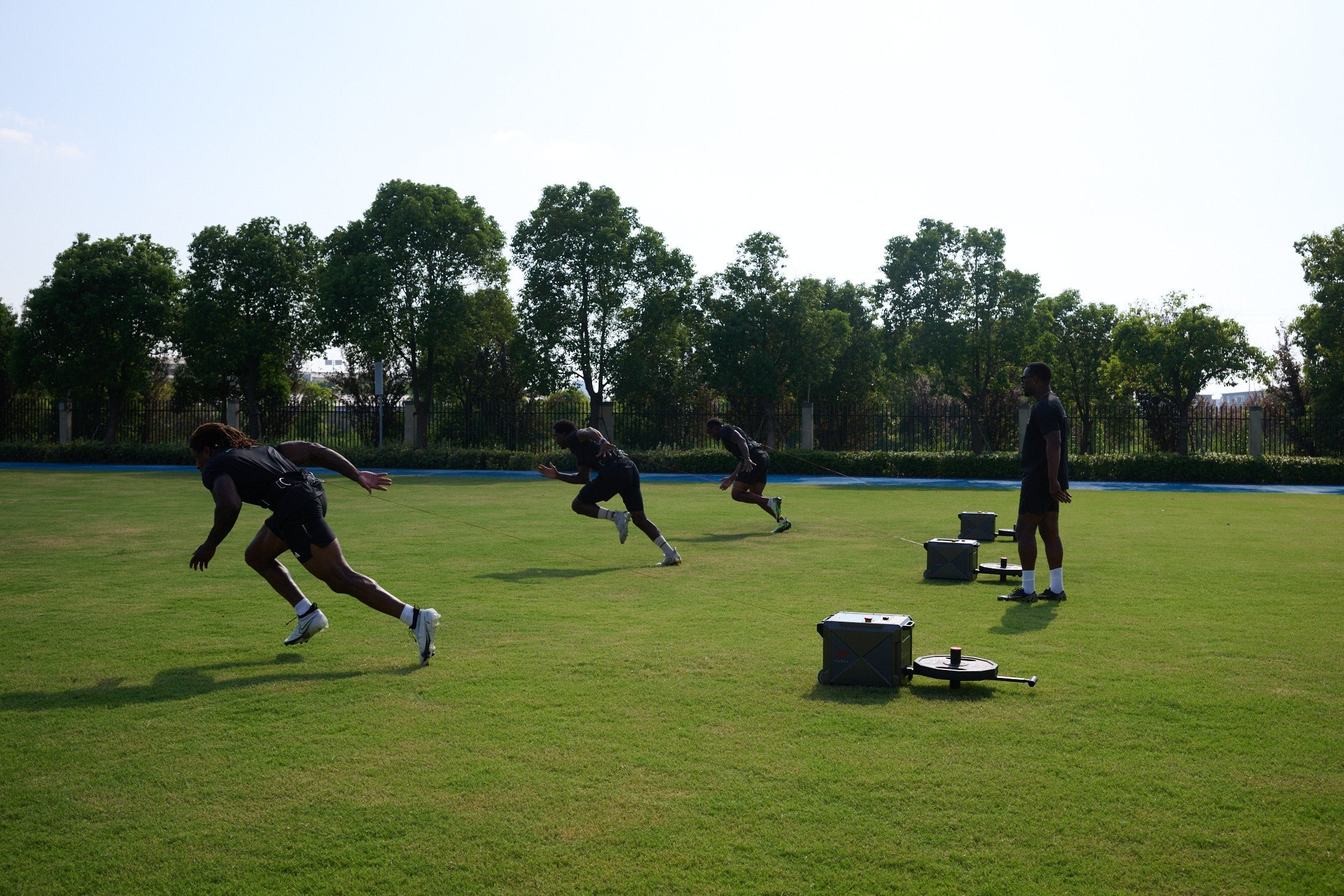Intro: The Overlooked Edge — Eccentric & Tempo Control in Soccer
Speed alone doesn’t win soccer games — it’s the ability to control that speed that separates the best from the rest. Matches are often decided in the instant when a player stops hard, pivots, and drives forward again. Those moments depend less on raw power and more on how well the body absorbs and redirects force.
The problem is, most programs still train only the “go” part of the movement — the concentric phase — and ignore the braking phase, where muscles lengthen, stabilize, and coordination is truly tested. That’s where tempo-focused work comes in: it teaches players to handle acceleration and deceleration with rhythm, timing, and control instead of chaos.
T-APEX makes these qualities measurable — giving coaches the tools to refine resistance, tempo, and movement quality with scientific accuracy.
“The ability to decelerate efficiently is what separates a powerful athlete from an effective one.”
How T-APEX Supports Tempo & Eccentric Work
Compared with conventional sleds or resistance bands, T-APEX delivers intelligent, motor-driven control that adapts in real time to each athlete’s movement. Traditional tools rely on constant or elastic tension — once the athlete slows down, resistance fades. T-APEX, by contrast, maintains precise force and tempo control throughout every phase.
Key smart features that set T-APEX apart:
-
Adaptive Resistance:
The motor senses movement speed and direction, automatically adjusting resistance on the fly. It keeps every stride and brake under purposeful load — no dead zones, no slack when athletes slow down. -
Eccentric Delay (Smart Braking):
A short, programmable braking delay recreates the timing of real on-field deceleration. Perfect for sprint stops, change-of-direction work, or controlled landings. -
Bi-Directional Mode:
Allows both acceleration and braking rhythm to be trained within one continuous drill. Coaches can build smoother transitions, better balance, and stronger movement timing.
Together, these tools turn T-APEX into more than a resistance device — it’s a smart training platform that speaks the language of soccer: rhythm, control, and precision.
Practical Training Scenarios — From Deceleration to Tempo Stability
Here are four practical drills showing how coaches can integrate T-APEX to enhance control, rhythm, and soccer-specific strength.
| Drill | Setup | Focus | Key Metric |
|---|---|---|---|
| 1. Controlled Braking Sprint | 10–12 m resisted sprint into a short braking zone using mid-to-high resistance. | Absorb momentum smoothly, maintain posture, avoid forward collapse. | Time-to-Peak Velocity |
| 2. Tempo-Based COD (Z-Pattern) | Perform a “Z”-pattern run alternating fast and slow segments. | Control rhythm and alignment during each change of direction. | RMS (Average Power) |
| 3. Lateral Stability Shuffle | Dual-anchor isotonic mode for 5–8 m side-to-side shuffles. | Strengthen hip drive and core stability for defensive slides. | Peak Power Output |
| 4. Rhythm Sprint Activation | Light resistance (1–2 kgf), 10–15 m sprint. | Build timing and rhythm before matches. | Velocity Curve Smoothness |
“Since adding tempo-based eccentric drills with T-APEX, our players show cleaner deceleration and better rhythm under fatigue.”
— Professional Strength Coach, Europe
Field Application Insight — From Pro Teams to Local Clubs
In December, the T-APEX team visited Werder Bremen at the Weserstadion to collaborate with the club’s performance coaches. Our shared mission: make performance measurable — using the T-APEX Sprint Analysis System.
Together, we explored key performance metrics — force, speed, and sprint quality — based on live data. The coaches quickly saw how the system identified individual differences in acceleration and control. Within a single session, they knew which players required more eccentric-load or tempo-stability work — and could adjust drills immediately.

“It’s not just about being fast — it’s about knowing where your power comes from and how you control it.”
— Performance Coach, Werder Bremen
That same data-driven expertise can be applied in any training environment — helping coaches measure what truly matters: how strong, how fast, and how controlled their players really are.
Integrating Eccentric & Tempo Work into Team Plans
- Add 1–2 sessions per week focused on eccentric and tempo control.
- Use them as part of small-sided warm-ups, pre-match activation, or recovery days.
- Prioritize rhythm consistency and movement quality over training volume.
“The best teams don’t just play fast — they play in control.”
Conclusion
Eccentric and tempo training form the bridge between power and control. T-APEX makes that bridge measurable — combining smart resistance, safe load management, and soccer-specific application.
“Train for control, not just speed. Measure rhythm, not just distance.”


